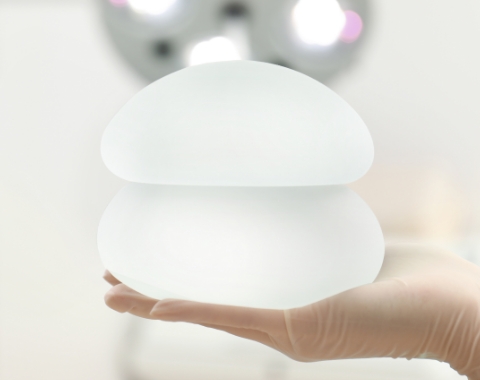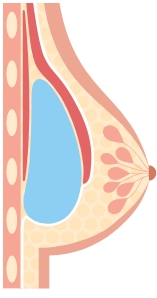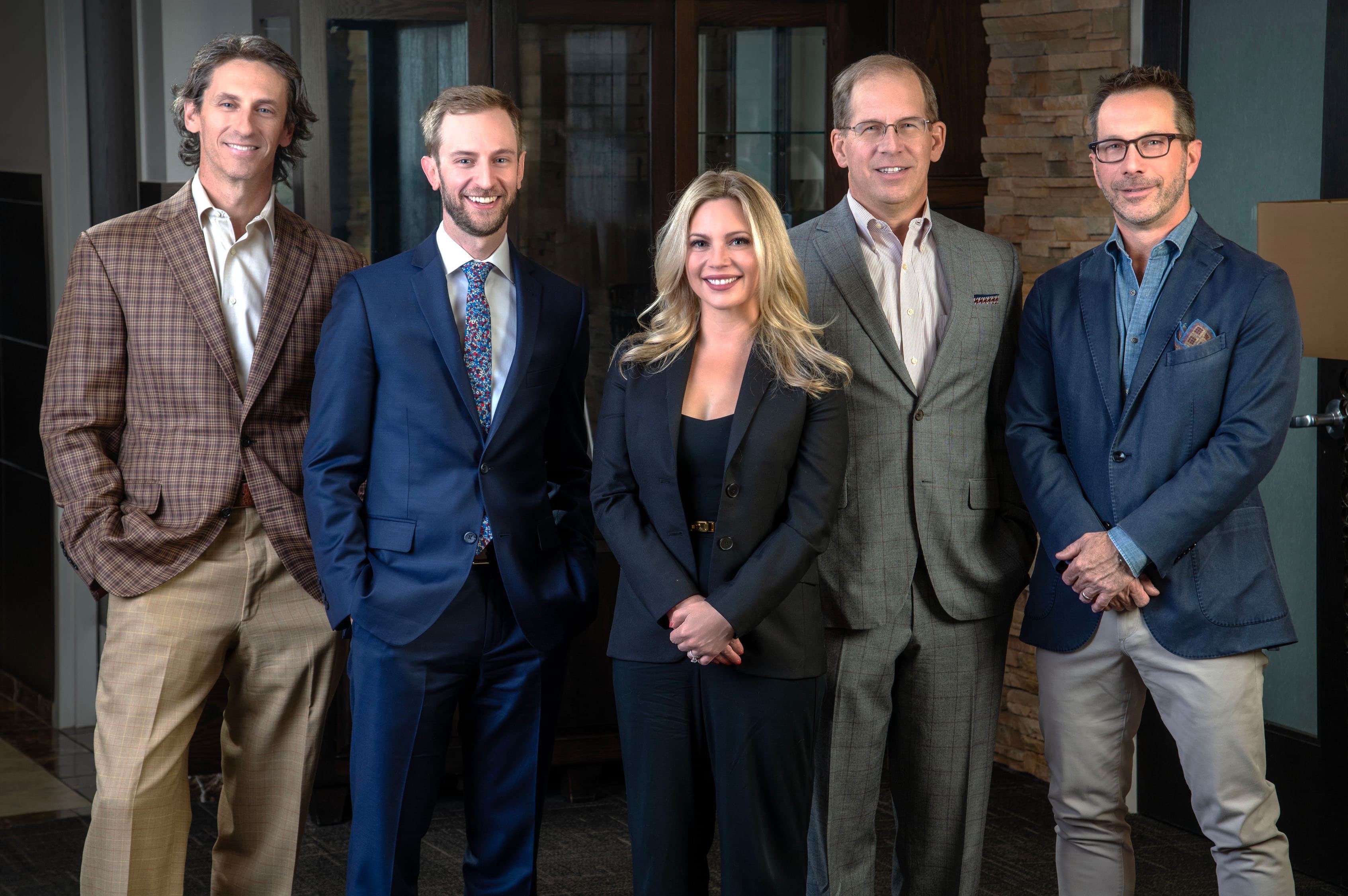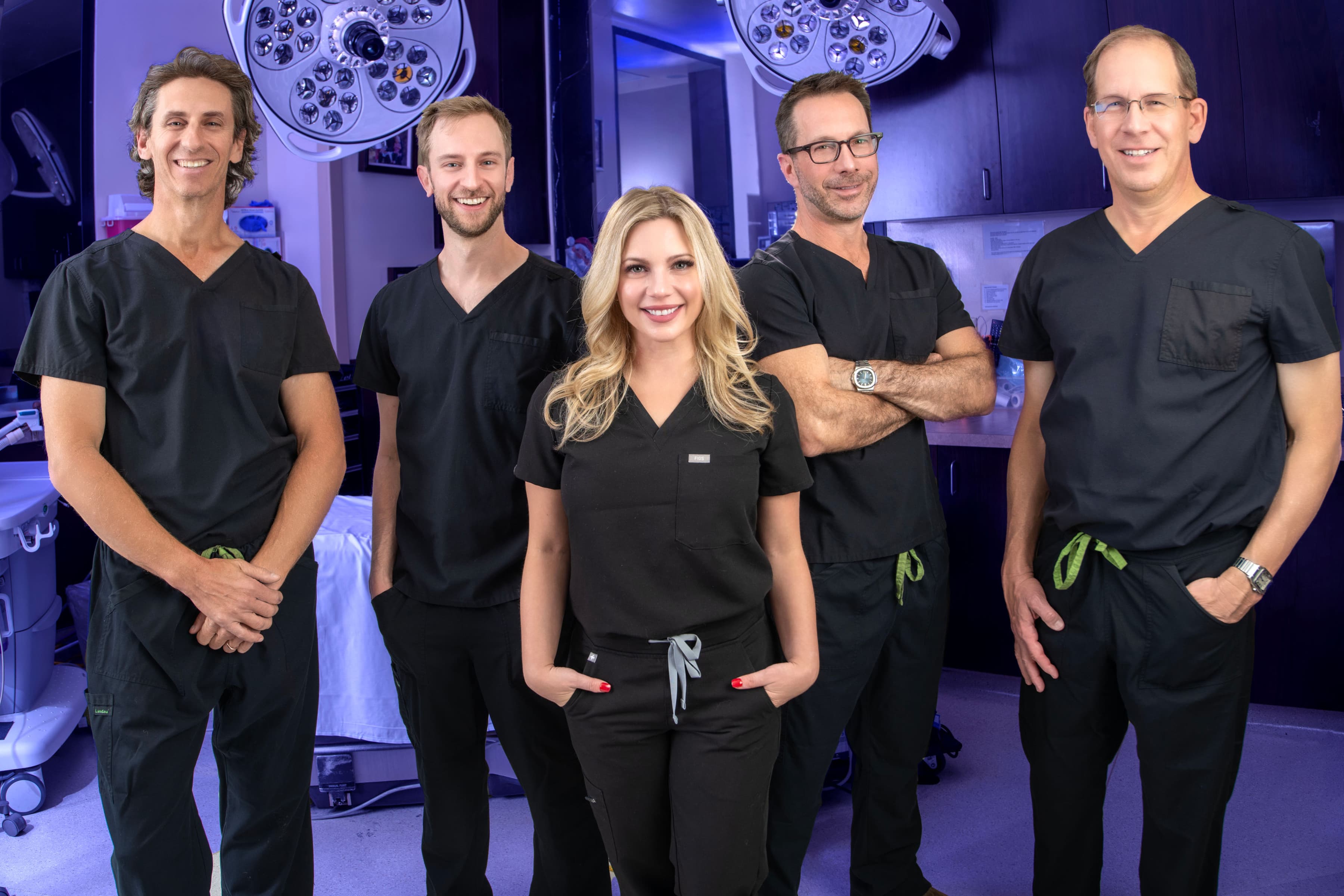The Center for Cosmetic Surgery
725 Heritage Road #100
Golden, CO 80401
Phone: (303) 278-2600
Monday – Friday: 8 a.m.–5 p.m.
The Center for Cosmetic Surgery
755 Heritage Road #100
Golden, CO 80401
Phone: (303) 279-6100
Monday – Friday: 8 a.m.–5 p.m.
The Center for Cosmetic Surgery
501 South Cherry Street #900
Denver, CO 80246
Phone: (303) 951-2100
Monday – Friday: 8 a.m.–5 p.m.
The Center for Cosmetic Surgery
501 South Cherry Street #900
Denver, CO 80246
Phone: (303) 951-2102
Monday – Friday: 8 a.m.–5 p.m.
The Center for Cosmetic Surgery
6985 Tutt Blvd Ste 110
Colorado Springs, CO 80923
Phone: (719) 380-1823
Monday – Friday: 9 a.m.–5 p.m.
Breast Augmentation in Denver, CO
- 1-1.5 Hour Surgery
- Back to Work: 3-5 days
The decision to undergo breast augmentation is a very personal one. Some women are looking to achieve volume they never got as their breasts developed, while others are looking to restore the volume they lost after pregnancy, breastfeeding, or weight loss. Because of these varying needs and motivations, breast augmentation surgery requires an individualized approach to help you achieve your goals.
Choosing a board-certified plastic surgeon with significant breast enhancement expertise and experience is essential for getting the results you want. At The Center for Cosmetic Surgery, our renowned breast enhancement specialists attract patients from the Denver Metro area and surrounding communities like Colorado Springs, Fort Collins, Vail, the Aspen Valley, and Cheyenne, WY. Our passion for impeccable results, outstanding patient care, and providing an exceptional experience attracts patients from the entire Mountain West region.
TRUST YOUR BREAST AUGMENTATION TO THE EXPERTS
Learn why the Center for Cosmetic Surgery is a top destination for breast augmentation patients from Colorado Springs, Fort Collins, and throughout the Denver metro area:
- Our team has performed thousands of breast augmentation surgeries
- We specialize in customized results and the natural-looking Colorado aesthetic
- Our relationships with all 3 U.S. implant manufacturers mean more options for you
- Selected for participation in several breast implant clinical trials
- We take the time to learn about your lifestyle and your goals to ensure your best outcome
Our breast augmentation surgeons would be happy to meet with you in person and answer all your questions. Simply call (303) 278-2600 or request your consultation online.
On This Page
WHAT IS BREAST AUGMENTATION SURGERY?
Breast augmentation is a breast enhancement procedure that adds volume to one or both breasts with silicone or saline implants. In some cases, our surgeons can use fat transfer to add volume (natural breast augmentation) or enhance breast implant results for a “hybrid” breast augmentation.
WHAT IS FAT TRANSFER BREAST AUGMENTATION?
Fat transfer breast augmentation involves using liposuction to harvest fat from other areas of the body (often the thighs or belly), purifying it and injecting it into the breasts. This option may be a good choice for patients who meet the following criteria:
- Want a modest increase of ½ to 1 cup size
- Desire a natural alternative to breast implants
- Have enough excess fat to harvest for the procedures
Our surgeons also combine implants with fat transfer. This technique uses implants to fill out the breast and fat transfer to add targeted fullness to areas like the cleavage or upper breast, or for soft tissue enhancement to conceal implant edges.
It is important to understand that fat grafting results can be unpredictable due to variability in the survival of transplanted fat. Some patients may require repeat grafting procedures to attain their desired outcome.
Breast Augmentation
Before & After Photos
WARNING:
This feature contains nudity. Please click OK to confirm you are at least 18 years of age and are not offended by such material.
BENEFITS OF BREAST AUGMENTATION
A “boob job” offers emotional and aesthetic benefits by enhancing breast volume and shape. Women choose this procedure for a variety of personal reasons, including:
- Boosting self-confidence and alleviating feelings of insecurity or dissatisfaction with their bodies
- Adding volume that nature never provided
- Restoring a sense of femininity and self-image after pregnancy or weight loss
- Improving body proportions
- Correcting asymmetry or congenital breast deformities
Breast augmentation’s wide appeal has made it the most popular cosmetic surgical procedure in the United States.
ARE YOU A GOOD CANDIDATE FOR BREAST AUGMENTATION?
If you are unhappy with your natural breast size, asymmetry, or the shape of your breasts after pregnancy or weight loss, you may be a good candidate for breast augmentation. You should be a healthy nonsmoker at a stable weight. Our experienced surgeons carefully evaluate your health and lifestyle factors to ensure you are a good candidate.
CONSIDERATIONS FOR CUSTOMIZING YOUR BREAST AUGMENTATION
You have more implant options than ever before, from fill material to placement and surgical techniques. Our cosmetic breast surgery specialists, Dr. Andrew Wolfe, Dr. Steven Vath, Dr. Paul Steinwald, Dr. Matthew Freeman, and Dr. Teresa Cunningham, can help you decide which options will work best for you.

CHOOSING IMPLANTS
At The Center for Cosmetic Surgery, our surgeons use both saline and the latest silicone gel breast implants. Each is safe, offering unique advantages and drawbacks.
Saline
Saline implants offer the advantage of easier rupture detection, as the leaking saline is harmlessly absorbed by the body. Two types of saline implants are available in the U.S. The more commonly used standard saline devices have a single silicone plastic shell; your surgeon places the implants in your breasts and then fills them.
They perform best in patients with adequate existing tissue and are usually placed beneath the muscle. Because of their lack of structure, however, they tend to be more noticeable in the breast. The implants may be palpable to the patient or her partner and may feel “sloshy” in some cases.
Puregraft Serene (Saline)
To address these drawbacks while maintaining safety and ease of use, engineers created the Serene breast implant (formerly Ideal Implant). It is a multi-lumen saline device with 2 saline chambers and multiple baffles, making them feel and move more naturally than other saline implants. They also have a lower rupture rate than many competitors. They have limited sizes and shapes available, however, and are relatively expensive. If you prefer saline and can find an implant that fits your dimensions and your budget, Serene implants may be an excellent choice.
Silicone Gel
Silicone breast implants are far more commonly chosen than saline. They offer a more natural feel and appearance for many patients; the less breast and body fat the patient has, the bigger the benefit she will get with silicone. Silicone options have evolved from less cohesive, underfilled devices to the fuller, more cohesive “gummy” implants we have today. The first “gummy” implants to be released in the U.S. were shaped, textured devices. The textured surface was later found to be associated with a rare but potentially dangerous condition called BIA-ALCL. Due to concerns surrounding texture, the U.S. market shifted back to smooth, round devices, and the manufacturers responded by creating round implants with the more modern “gummy” silicone fill.
Motiva®
In late 2024, the FDA approved Motiva silicone breast implants for U.S. distribution. These are next-generation devices and have lower rates of rupture and capsular contracture. Subglandular placement is the standard for Motiva implants. We have been working with these devices since 2018 and are well-versed in their use.
In-Office Ultrasound Imaging
Although they have many advantages, silicone breast implants are more expensive and more challenging to evaluate for rupture, as their volume doesn’t change when they are compromised. We recommend either MRI or ultrasound tests to evaluate their integrity. Ultrasounds, in particular, are quite useful and convenient. At The Center for Cosmetic Surgery, we offer in-office ultrasound during our consultation process for patients with preexisting implants.
Implant Size
Aesthetic goals for a boob job vary from patient to patient and are an intensely personal decision. No two patients are alike, and an individual evaluation of each patient’s anatomy and an exploration of their preferred breast size and shape are important parts of the consultation. We offer both in-bra sizers and Vectra 3D imaging to help patients choose their implants. Our clinical expertise is essential in helping patients determine implant volume, set realistic goals, choose incisions and implant plane, and address other factors that impact long-term aesthetic and functional success.
You can read more about selecting your best implant size on our blog.
Implant Profile and Shape
In addition to size, choosing an implant with appropriate dimensions is paramount. A patient with wider breasts usually needs a wider implant, while narrower breasts do better with implants with smaller base diameters. To accommodate various body types and aesthetic goals, implants come in several profiles with different base-diameter-to-projection ratios. Those wishing for a more augmented look usually prefer the additional projection and roundness of high-profile implants. Our Vectra 3D imaging system can simulate before and after photos of our patients with different shapes and profiles, an invaluable asset when making such an important decision.
You can read more about selecting implant profile and shape on our blog.
INCISION OPTIONS
Three types of incisions are available for breast implant insertion:
- Inframammary (breast crease)
- Periareolar (along the border of the areola)
- Transaxillary (armpit)
While every surgical approach has advantages and limitations, data gathered over the last 10 to 15 years strongly supports the inframammary incision. From a cosmetic standpoint, a small incision (2.5-4cm, depending on size and type) hidden in the fold results in a minimal scar that is typically only visible as a faint line when the breast is lifted up.
An inframammary incision significantly lowers the risk of capsular contracture (a thickening of the scar tissue the body forms around the implant). Because the approach completely avoids the breast gland, there is less exposure to the normal bacteria that live in the breast ducts. Implant colonization with these bacteria is thought to be a primary cause of capsular contracture. Finally, sensation and breastfeeding tend to be protected with the inframammary approach, again due to less trauma to the breast gland.
Although the inframammary approach is often the best fit for most patients, we are well-versed in all approaches and can thoroughly discuss your options with you.



Vectra 3-D Imaging
Preview Your Projected ResultsIMPLANT PLACEMENT PLANE
During breast augmentation, the surgeon creates a space, called a pocket, under the existing breast tissue to insert the breast implant. The choice of plane–above or beneath the pectoralis (chest muscle)–is complex. However, each of these options has nuances that merit further discussion.
Above the Muscle (Pre-Pectoral Placement)
Subglandular placement has a short recovery time due to the lack of muscle trauma, and the implants are not affected by the activity of the chest muscles. However, it has limitations. In particular, capsular contracture was a common complication. Also, thin patients may notice rippling or other visibility challenges.
Subfascial placement involves placing implants above the muscle, but beneath the fibrous fascial covering of the muscle. Some surgeons began using this approach in the early 2000s in an attempt to add soft tissue cover over the implant and perhaps to decrease capsular contracture. It had some measure of success but was not completely protective of rippling or thick capsules.

Under the Muscle (Submuscular Placement)
Submuscular placement involves placing implants beneath the chest muscle. This option became a common way to avoid the drawbacks of placing them in front of the muscle. Initially, implants were totally covered by muscle, but this led to various distortions of the breast.
Dual plane placement releases the muscle along its lower margin and to varying degrees onto the sternum, allowing the implants to sit down in the breast in a more natural position.
Advantages
With submuscular placement, the chest muscle provides soft tissue coverage, resulting in:
- Results that look and feel more natural with saline implants and in thin patients.
- Reduced risk of capsular contracture, as documented in numerous published studies.
Disadvantages
The downsides to placing implants under the muscle include:
- Postoperative discomfort typically requiring narcotic pain medication for a few days.
- Some decreased strength in the chest muscles, demonstrated by long-term studies.
- Animation deformity (distortion of breast shape) when the chest muscle is flexed.
- Bottoming out or lateralization of the implants due to a constant downward push of the muscle over time.
Despite these downsides, most U.S. surgeons predominantly used the subpectoral plane. Many felt it was the best compromise, given the implants’ limitations regarding rippling and capsular contracture. Learn more in our blog post about breast implant placement options.
Your Breast Augmentation Consultation
At your initial consultation, your surgeon will discuss your surgical and implant options based on your medical history, anatomy, and unique aesthetic goals. Our clinical expertise is essential in helping patients determine implant volume, set realistic goals, choose incisions and implant plane, and address other factors that impact long-term aesthetic and functional success.
Implant Sizing
After your physical exam, your surgeon will perform a detailed and highly accurate sizing process utilizing both in-bra sizing implants and Vectra 3D imaging. Vectra can also simulate a breast lift if indicated.
Pre-op Appointment
About 2 weeks before your scheduled surgery, you will meet with one of our highly trained RNs for a history and physical exam. They’ll explain consent forms that require your signature. We’ll take photos and electronically submit prescriptions to your chosen pharmacy. We’ll draw your blood if lab work is needed.
Your Surgery
Our surgeons perform surgery at Apex Surgical Facility, our AAAHC-accredited surgical location. On the day of surgery, a nurse inserts an IV, and your surgeon will meet with you and mark the breasts. You will meet with one of our board-certified anesthesiologists, who will explain the anesthesia process.
In the OR, you will be placed under general anesthesia. Because you’re completely asleep, you’ll feel nothing, and the surgery can proceed efficiently and safely. The surgery itself takes approximately 1 hour, while augmentation with a breast lift takes around 2 1/2 hours. A nurse places sterile dressings and a surgical bra after the surgery. You’ll then be taken to a recovery room. After an hour or so, once you’re feeling ready, your ride can pick you up and take you home.
OUR EXCEPTIONAL PLASTIC SURGEONS
Board-certified plastic surgeons Dr. Steven Vath, Dr. Andrew Wolfe, Dr. Paul Steinwald, Dr. Matthew Freeman, and Dr. Teresa Cunningham lead our patient-centered practice with warmth, honesty, and respect.
HOW PAINFUL IS IT TO GET BREAST IMPLANTS?
Some discomfort after the procedure is expected, although many patients are surprised by how easy the recovery is. Experiences vary with implant placement and individual factors as follows:
- Under the muscle: Initial pain typically requires narcotic medication for 1 to 4 days. Muscle-relaxing medications can help with muscle spasms.
- Above the muscle: Some patients require nothing more than Tylenol to control the mild discomfort, while others require stronger medication for a few days.
WHAT IS BREAST AUGMENTATION RECOVERY LIKE?
Recovery is typically straightforward, and most patients are ready to return to work, school, and nonstrenuous activities in about 5 days to a week. You’ll need a trusted friend or family member who is 18 or older to drive you home the day of surgery and stay with you for at least 24 hours post-op. We’ll send you home wearing a surgical compression bra that reduces swelling and helps results take shape.
BREAST AUGMENTATION RECOVERY TIMELINE
Even though healing after a boob job is different for everyone, here is a typical postoperative timeline:
- First 24 hours post-op: Patients are typically fatigued from surgery and anesthesia. Some experience nausea, which can be treated with medications and tends to resolve fairly quickly. The chest can feel tight, especially if the procedure involves submuscular placement. It is common to have sensory changes after surgery, and some parts of the breast may be numb or oversensitive. The implants start high and will settle with time. This can be pronounced during the first week. Bruising is typically mild. If a mastopexy was performed, the longer incisions and more involved surgery may lead to more significant bruising.
- 5 to 7 days post-op: By the end of the first week of recovery, most patients are back to non-strenuous work. If you’ve stopped taking narcotics or muscle relaxants, you can resume driving. Many people start taking walks. Heart rate and blood pressure should remain normal for 2 weeks after surgery, however.
- 2 to 4 weeks post-op: The acute discomfort after surgery is typically gone by this point, though the breasts can remain tender for weeks. Patients should continue wearing a supportive bra for the first month. You can engage in light exercise that doesn’t involve the upper body.
- 4 to 6 weeks post-op: You can resume more vigorous activities after the first month. The breast implants will have started settling, although the final shape can take months to evolve. You can apply scar creams to healing incisions as soon as the surgical tape falls off. You can start more aggressive scar therapies like microneedling or fractional laser treatments at 6 weeks.
Patients are encouraged to contact our office at any point after surgery if they have questions or concerns.
POSTOPERATIVE CONSIDERATIONS
There are a few issues to plan for after surgery. Attention to these considerations can enhance recovery and avoid postoperative setbacks.
The Best Sleeping Positions
It is important to get a lot of sleep after any surgical procedure. For most patients, sleeping on the back with the torso in a mildly elevated position works best. This can be in an adjustable bed, a recliner, or simply propped up on a few pillows. As the breasts heal, patients can transition to side sleeping if preferred, so long it does not apply undue pressure to the breasts.
Bathing and Swimming
Depending on the type of dressings applied after surgery, you can either shower immediately or avoid it for 24 to 48 hours. We’ll provide these instructions at the preoperative history and physical, but patients can always contact the office for questions. Swimming is typically fine once incisions are well healed, with no open areas of delayed healing. This can take a few weeks.
The Right Bra
It’s important for the breasts to be supported properly in the weeks following breast augmentation. For the first 6 weeks, we recommend avoiding any underwire bras, as they can irritate healing incisions. We also discourage pushup bras since they can affect implant placement during the healing process. A medical-grade bra that supports the breasts as they heal is generally the best choice. These bras generally close in the front, allowing for easier access while patients are stiff, sore, and healing.
Exercise After Surgery
Mild, non-strenuous activities that don’t involve the upper body (such as a relaxed walk or a gentle spin on an exercise cycle) are fine during the first few weeks after surgery. Heart rate and blood pressure should remain normal for the first 2 weeks to avoid stressing healing blood vessels, which can result in postoperative bleeding that might need urgent surgical intervention.
You can begin mild cardio workouts after 2 weeks; you should pay attention to your body and not overdo it too soon. More strenuous upper body activities can begin at 6 weeks, with a gradual increase in intensity as the body gets back to normal. It may be months before the upper body feels normal, so don’t be discouraged if you remain stiff or feel a bit weak for quite some time. Recovery is typically quicker with above-the-muscle placement, but these general guidelines apply to all surgical approaches.
WHEN WILL YOU SEE YOUR FINAL RESULTS?
It takes months for the breasts to evolve into their final form after surgery, and a variety of factors affect this process. Smooth implants tend to drop a fair bit after surgery, so they will begin in an elevated position and settle over 3 to 6 months. The tighter the breast, the longer this “drop and fluff” may take. Additional procedures like a breast lift or the addition of mesh support can alter this timeline.
ABOUT BREAST AUGMENTATION SCARS
Scars are a necessary component of any breast surgery. Our surgeons place incisions in the most inconspicuous locations and perform precise, meticulous closure with long-lasting but dissolvable sutures to support healing. Incisions are typically covered with surgical tape for 3 to 6 weeks, and scar creams can be applied once the tape falls off. For most people, incisions start as fine, pink lines that may take 18 to 24 months to fully fade. Read more about the incision healing process and how to minimize scars in our blog post.
COMBINING BREAST AUGMENTATION WITH OTHER PROCEDURES
Many women choose to have multiple procedures at once to save time, money, and recovery intervals. Virtually any other procedure can be combined with breast augmentation under the same anesthetic. There is a limit to how much can be done at one time, however, based on a variety of factors. Our knowledgeable staff can guide you should you wish to add additional procedures. Popular combinations include:
BREAST AUGMENTATION IN MOMMY MAKEOVER SURGERY
A Mommy Makeover is a personalized combination of procedures that addresses the effects of pregnancy and breastfeeding. Many women combine breast augmentation with liposuction and a tummy tuck to rejuvenate their breasts and abdominal area and remove areas of stubborn fat.
COMBINING a BREAST LIFT WITH AUGMENTATION
Breast implants can create beautiful, full breasts, but they will not correct sagging. Many women need a combined breast lift with implants to attain the following improvements:
- Increase breast volume
- Reshape and reposition the breasts
- Resize enlarged areolas (if desired)
When expertly performed, breast lift with implants results can be transformative, but this can be a challenging combination with compromised results in the hands of a less talented surgeon. Our skilled breast enhancement surgeons will guide you through all the decisions involved in creating your ideal results.
BREAST AUGMENTATION REVISION SURGERY
Most patients who get breast implants are happy with their results. Unfortunately, a significant number will need some sort of revision. Even if everything goes perfectly, implants don’t last forever and will need to be replaced at some point. Revision breast augmentation surgery is generally more complex and challenging than primary cases and requires special expertise.
BREAST AUGMENTATION FAQ
HOW MUCH DOES BREAST AUGMENTATION SURGERY COST IN THE DENVER, COLORADO, AREA?
The cost for breast augmentation at our Denver practice depends on a variety of factors, including:
- Choice of breast implants
- Duration of surgery
- Whether it is combined with other procedures
At a consultation, detailed pricing options will be explained so there are no surprises. We participate with a variety of financing companies that can help patients spread their payments out over time.
WILL MY BREASTS NEED MASSAGING AFTER AUGMENTATION?
It depends. We advise some of our patients to begin gentle massage a week after their surgery. This can help soften the pocket and facilitate implant settling. In other cases, however, it is not recommended. Patients should wait for their one-week appointment to get instructions from their surgeon.
HOW LONG DOES A BOOB JOB LAST?
The results of a boob job last as long as the breasts’ appearance is satisfactory and the implants remain intact. Practically speaking, they typically last 10 to 25 years, although newer technology may extend this time frame.
CAN PATIENTS GO BRALESS AFTER BREAST AUGMENTATION SURGERY?
We advise our patients to wear a good, supportive bra full-time for 4 to 6 weeks after surgery. Gentle compression is typically helpful to reduce discomfort, and the support can improve the predictability of the result. After that, it is up to the patient whether she wants to wear a bra or not. Certainly, adequate support would be indicated during exercise, especially in women with larger breasts.
WHAT’S THE BEST TIME OF YEAR TO GET A BOOB JOB?
The best time to get breast implants depends on your personal goals and recovery timeline. In Denver, many experts recommend winter as an ideal period because it allows enough time for recovery before summer activities. This timing ensures that swelling subsides, incisions heal, and you feel confident by the summer months.
DO BREAST IMPLANTS SAG AS YOU AGE?
Breast implants may gradually lose their shape over time, but most sagging occurs as surrounding breast tissue and skin lose elasticity due to aging, gravity, and weight fluctuations.
WHAT SIZE IMPLANTS ARE MOST POPULAR?
Most patients want natural-looking results, which means choosing an implant size that’s in proportion to their bodies. That may be 150 cc implants or 450 cc.
WHAT ARE GUMMY BEAR IMPLANTS?
Gummy bear is a nickname for highly cohesive silicone gel implants, which hold their shape even when sliced, much like gummy bear candies.
IS 40 TOO OLD TO GET A BOOB JOB?
Not at all. We see many women in their 40s for breast augmentation, especially those who lost breast volume after having children.
Schedule Your Consultation
Our expert surgeons are ready to see you and can help you achieve your aesthetic goals. Please request a consultation or call our office at (303) 278-2600 to learn more about the procedure with one of our highly trained and experienced board-certified plastic surgeons. The Center for Cosmetic Surgery has 2 plastic surgery offices, including one just outside Denver in lovely Golden, Colorado, immediately off 6th Avenue West. We also have a downtown office in Cherry Creek, Denver.











